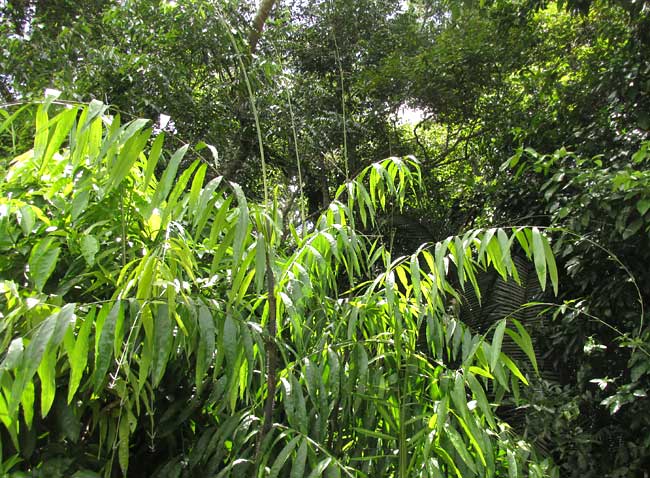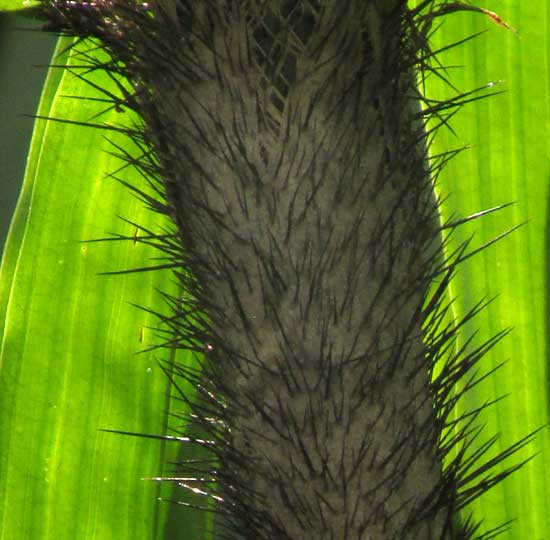Excerpts from Jim Conrad's
Naturalist Newsletter
from the October 26, 2018 Newsletter with notes from a camping trip into northern Guatemala's Petén department
"VINE PALM"
This October 1st, during my camping trip in Guatemala's northern Petén region, I was walking along the road through El Rosario National Park on the east side of Sayaxaché when a bush growing among lots of weeds caught my eye. Most of the bush was hidden by weeds, but you can see its top below:

The bush's pinnately compound leaves were about six feet long (2m). That's one thing that had gotten my attention, but what really stands out in that picture are those long, slender items rising vertically from the bush's center. The same kind of slender things also terminated young leaves growing outwardly, as shown below:

In that picture it's clear that the slender items are immature extensions of the leaves' still-developing midribs. The backward-pointing growths are leaflets gradually modifying into spines toward the midribs' tips. At the leaf's tip, there's just backward-pointing spines. Just as unusual as all this was the bush's pliable, slender stem, shown below:

The black, needlelike spines are similar to those found on certain palms, and in fact here we do have a palm. And this palm species is famous less for being spiny than for being viny. Young trees start out growing erect, but as they mature they lean and wander, climbing up through thickets of trees or bushes to 40ft or so (12m). And thickets is usually where you see them, especially along disturbed lake shores.
This memorable palm is DESMONCUS ORTHACANTHOS, native from southern Mexico south through Central America to Brazil and Bolivia in South America. The Yucatan is too arid for them. There's no good English name for the species.. In Spanish sometimes it's called Palma Bejuco, which simply means "Vine Palm."
The backward-pointing spines at leaf ends -- technically known as cirri -- serve as hooks anchoring the plant among its neighbors as it climbs upward. Traditionally fiber from the stems has been used for baskets when nothing better was handy.
The world of palms is so large and diverse that sometimes it's hard to identify them to species level. This palm was easy, even lacking flowers and/or fruits.